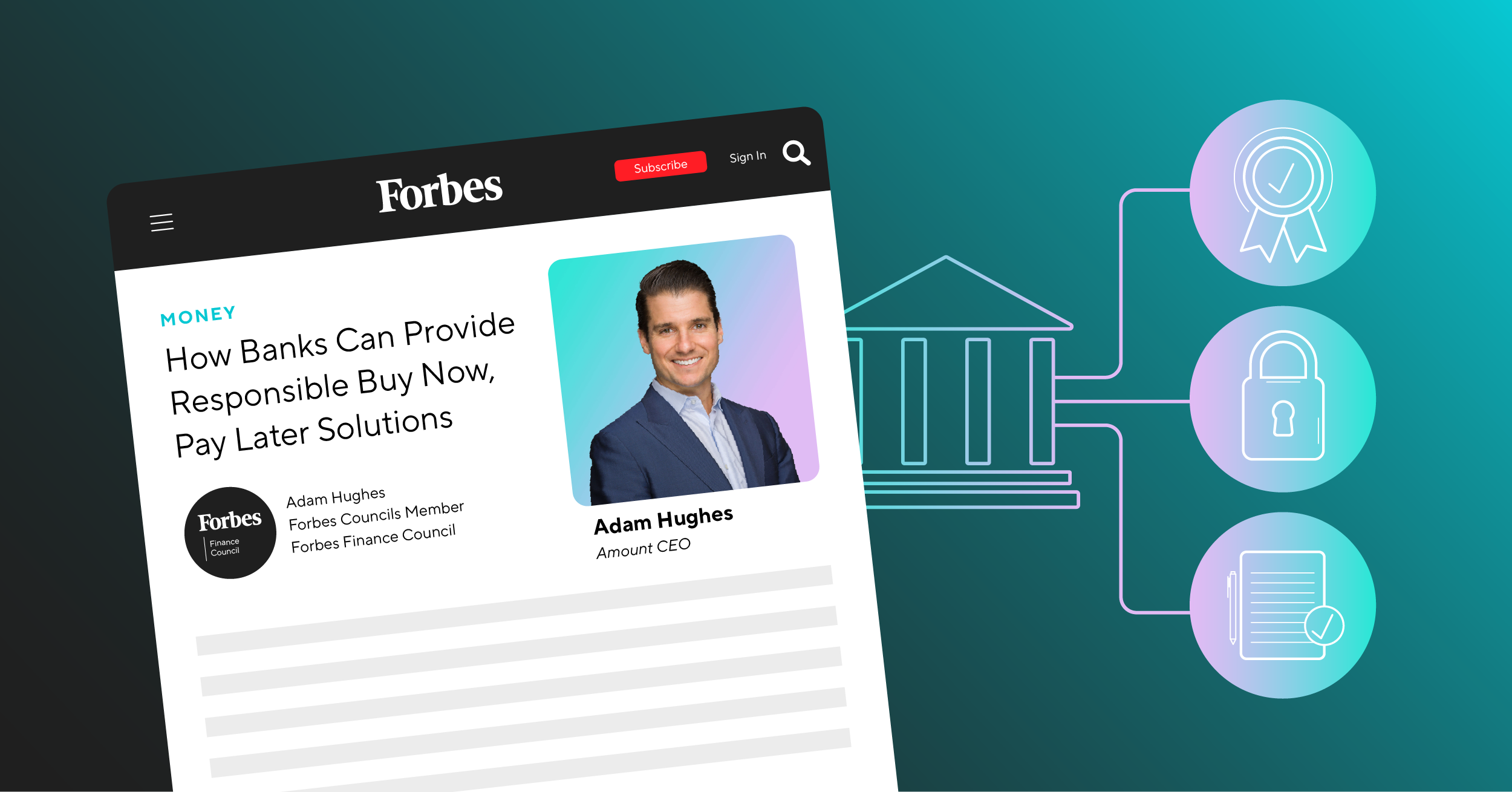
This is a reprint of an article that originally published on Forbes.com on August 29, 2022.
While the jury’s still out on whether or not the U.S. economy is officially in a recession, there’s no doubt that consumers are feeling the strain of record-high inflation. But by no means is this slowing down the still burgeoning buy now, pay later (BNPL) market, which is increasingly transitioning from big-ticket splurges to more everyday purchases, today easing the pain at the gas pump and the grocery store.
Yet with consumer adoption rising, so, too, is BNPL scrutiny by regulators in Washington, D.C.
Late last year, the Consumer Financial Protection Bureau (CFPB) announced an inquiry into the largest nonbank providers of BNPL products, spotlighting a few key areas of interest: credit bureau reporting, underwriting standards, consumer data protection and disclosures. While this understandably puts nonbank BNPL providers on the defensive, for traditional financial institutions, this regulatory clarity actually provides an opportunity to gain a leading edge.
Sure, entering the BNPL fray requires a technology solution, which is where many financial institutions fall—or stop—short. But to be clear, launching a BNPL offering does not necessarily require an infrastructure overhaul. There are financial technology options that can work with existing bank systems, which can allow institutions to design additional customer-centric loan products.
Considering the CFPB’s primary concerns around BNPL, and the lack of bank-backed offerings, the time is right for financial institutions to get to market with more responsible BNPL offerings that don’t just meet consumer demand for ease and convenience but also enable smarter financial decisions. Here are three reasons why.
Punitive Credit Bureau Reporting
Regulators in both the U.S. and around the world have expressed concern that BNPL providers are only reporting missed or late payments to credit bureaus, leaving no track record of on-time payments, which are the single largest credit consideration and account for 35% of an individual’s credit score. Leaving out this information significantly impacts a consumer’s ability to build credit—and pay less for it—over time.
Since many current BNPL providers are not chartered banks, however, they are not required to comply with financial regulations around credit bureau reporting. Financial institutions, on the other hand, are bound by regulatory and legal requirements pertaining to credit reporting and have built the infrastructure necessary to ensure that consumers’ on-time BNPL payments are reported to the bureaus, facilitating improved access to affordable credit over time.
Lack Of Underwriting Standards
Policymakers are similarly concerned that nonbank BNPL providers perform little or no underwriting when enrolling consumers in these products. In fact, many nonbank BNPL providers, which primarily offer BNPL in split pay options as opposed to installments, argue that BNPL products aren’t loans and therefore shouldn’t be subject to any underwriting requirements.
Regulators, however, take a different view, pointing to the fees that can accumulate for missed or late payments. Herein lies a tremendous opportunity for banks to expose this flaw in the market structure and offer more responsible BNPL offerings by expanding the concept of BNPL beyond split pay to encompass longer-duration installment loans, treating BNPL as an extension of credit.
Equipped with a BNPL technology solution designed to rapidly execute credit bureau pulls, assess the ability to pay with income and employment verification, and produce and deliver consent and disclosure forms (including TILA, e-consent, privacy notices, risk-based pricing notices and adverse action letters), financial institutions can provide BNPL products regulated at the state levels and at a federal level.
Questionable Consumer Data Privacy Practices
Last but not least is great concern in Washington over how BNPL providers are collecting, storing, sharing and selling consumer data. Last December, the CFPB issued a series of orders to five of the largest BNPL companies to collect information on the risks and benefits of BNPL, citing concerns with data harvesting in a consumer credit market already quickly changing with technology. More recently, CFPB Director Rohit Chopra questioned whether nonbank BNPL provider data is being combined with browsing history, geolocation history, health data or other apps.
By contrast, under the Gramm-Leach-Bliley Act, financial institutions are heavily regulated when it comes to how they may use and interact with customer data. Accordingly, banks are uniquely suited to check the box on this regulatory concern, too.
Given the increasing attention from policymakers, the paucity of financial institutions that have entered this space is not surprising. But with the CFPB now leaning into the BNPL space, it’s now more clear where the BNPL regulatory requirements will lead—and why many financial institutions are better positioned to meet them while delivering greater customer value.
Still in its early stages, BNPL’s evolution will be market-driven, and banks will forever have to compete with the Klarnas, Affirms, even Apples, of the world. By meeting consumer demand for BNPL, and providing both split pay and installment loan offerings side by side, banks can give customers flexibility and control with a profitable—and responsible—financial product.

To learn more about why BNPL regulation will be good for customers — and for the banks that serve them — read "CFPB's Coming Fintech Rules Could Help Banks' BNPL Programs."
 Read Article
Read Article